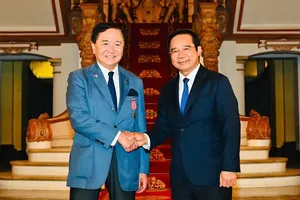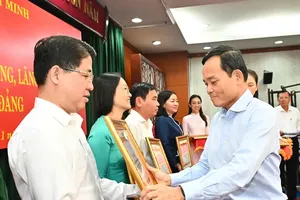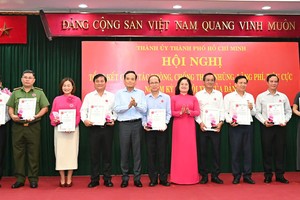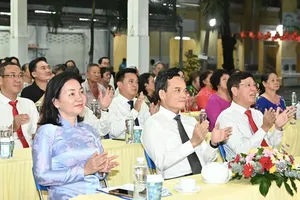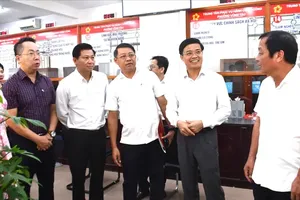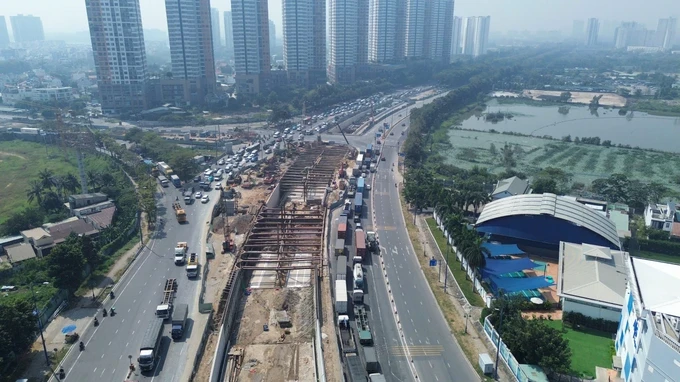
One project capturing significant public attention is the ambitious Terminal T3 at Tan Son Nhat International Airport, a substantial VND11 trillion (US$423 million) investment. Remarkably, this vital project was finalized two months ahead of its initial timeline.
According to Le Khac Hong, Head of the Terminal T3 Project Management Unit, the construction faced formidable challenges, including a severely constrained working area and relentless traffic congestion on the surrounding Truong Chinh and Cong Hoa streets, severely hindering the transport of crucial equipment and materials. Adding to the complexity, Terminal T3’s close proximity to the operational Terminal T1 meant constant aircraft movements overhead.
Given its status as a critical national task, the project was under constant scrutiny, with high-ranking Party, State, and Government officials regularly inspecting progress and providing directives. This intense oversight placed considerable pressure on both the developers and the construction teams.
To overcome these hurdles, the primary contractor, Construction Corp. No.1 (CC1), implemented an aggressive strategy, frequently deploying a massive workforce, at times numbering in the thousands. They also adopted flexible solutions such as prefabricating structural components, undertaking simultaneous construction across multiple smaller sites, and implementing round-the-clock work schedules. This dynamic approach allowed for significant time savings without compromising quality or safety standards.
Another significant achievement is An Phu Intersection in Thu Duc City. For commuters, this construction site had long been a source of frustration due to protracted delays and the resulting chronic traffic gridlock. However, the recent opening of the HC1 underground tunnel branch has dramatically improved traffic flow from the Long Thanh - Dau Giay Expressway into HCMC. What is less known is that this vital infrastructure component was completed nearly a month ahead of schedule.
Head Luong Minh Phuc of the HCMC Transportation Infrastructure Construction Investment Project Management Board detailed the strenuous conditions surrounding An Phu Intersection’s construction in the city’s bustling eastern gateway. The relentless traffic flow and its crucial connection to major expressways demanded meticulous planning, employing sequential construction, maximizing nighttime and weekend work, and integrating advanced foundation and retaining wall technologies to achieve early completion despite significant public and leadership pressure.
He underscored that the timely completion of previously delayed projects, such as Nguyen Van Linh - Nguyen Huu Tho Underpass in District 7, hinged on the decisive intervention of city leaders. Their proactive engagement through repeated site visits, stringent demands for accountability from all stakeholders, clear explanations for delays, and the imposition of concrete, time-bound action plans, coupled with rigorous follow-up inspections by the HCMC People’s Committee, ultimately proved instrumental in steering these critical infrastructure projects towards successful completion and operational readiness.
Numerous other projects, including the widening of Duong Quang Ham Street (Go Vap District), Phuoc Long Bridge, Nam Ly Bridge, and Tang Long Bridge (Thu Duc City), have also seen successful turnarounds and early completion. From these practical experiences, the city has distilled a “3 speeds” model for infrastructure project implementation, namely rapid leadership, swift site clearance, and accelerated construction.
The leadership phase has seen a tightening of discipline, with city leaders conducting frequent on-site inspections and holding regular coordination meetings directly at the construction sites. Crucially, legal and administrative hurdles are being resolved on the spot.
Site clearance, a notoriously challenging phase, has seen HCMC flexibly applying National Assembly Resolution 98/2023/QH15, implementing compensation close to market value, providing robust resettlement support, and fostering open dialogue with affected residents. The Tran Quoc Hoan - Cong Hoa connecting road project serves as a prime example. Despite requiring the relocation of over 1,300 households in a very short timeframe, effective community engagement ensured timely land handover.
In terms of construction techniques, many domestic contractors have proactively embraced technological innovation, utilizing rolling construction methods, prefabrication, rapid assembly, and optimized site management. Tight coordination between contractors, consultants, supervisors, and investors is strictly enforced, contributing to faster timelines without compromising quality or safety.
The “3 speeds” approach has been and will continue to be widely applied by HCMC to major upcoming projects such as Metro Line No. 2 (Ben Thanh - Tham Luong), Ring Roads 2, 3, and 4, and Can Gio Bridge, aiming for efficient and timely delivery.
Furthermore, a crucial lesson learned is the importance of public consensus. Proactive engagement and communication efforts have ensured that residents clearly understand the vital role of infrastructure in enhancing their quality of life and the city’s overall development, leading to greater willingness to share short-term inconveniences and accept land handover.
“HCMC stands on the tip of a breakthrough development phase, with a series of key transportation projects receiving significant investment and being completed ahead of schedule”, shared Vice Chairman Bui Xuan Cuong of the HCMC People’s Committee. “Drawing on the experience of ongoing and completed projects, the city will soon resolve its infrastructure bottlenecks, expand development space, and significantly improve the quality of life for its residents.”
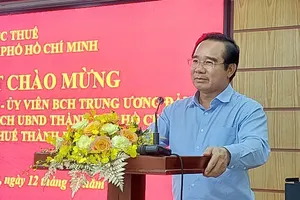
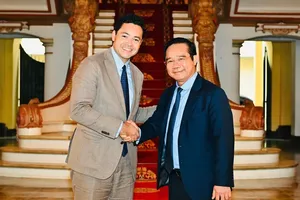
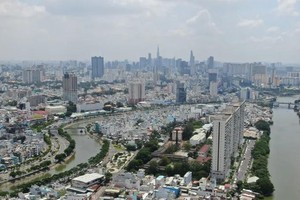
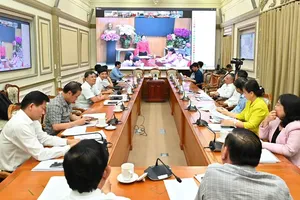
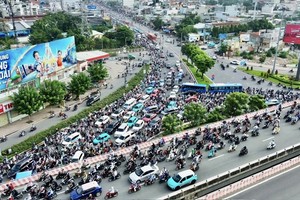
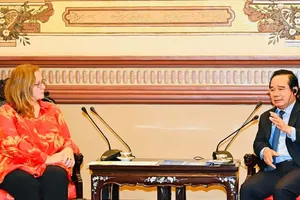
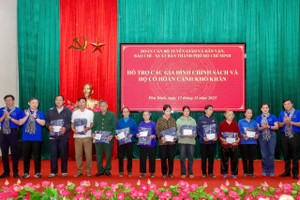
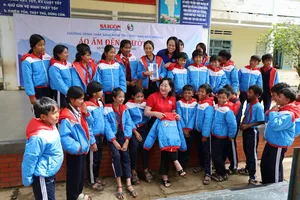
)
